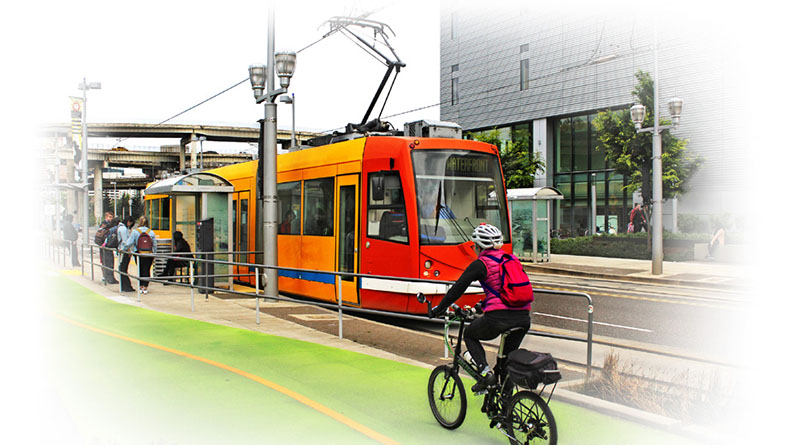Manual on Bicycle and Pedestrian Connections to Transit. FTA Report No. 0111
Federal Transit Administration, prepared by the Transportation Research & Education Center (TREC) at Portland State University
In August 2017, the Federal Transit Administration published a comprehensive manual on bicycle and pedestrian access to transit stations. The manual outlines best practices for transportation professionals to make transit stations as accessible and safe as possible for bicyclists and pedestrians. The manual addresses the needs of pedestrians at crosswalks and on sidewalks, as well as bicycle parking, integrating bike share programs with transit, and transit site accommodations for bicyclists. Takeaways discussed include the importance of collaborating with key stakeholders from the community, governing entity, regional planning agencies, and transit agencies; the types of plans and policies to be drafted to ensure a unified vision of strategies to be implemented; and how to create a shift in culture from driving to walking or biking to the train station.
Bicycle and pedestrian accessibility to train stations is crucial in transit-oriented developments (TOD) as it makes riding public transportation easier and more convenient, improves riders’ health through active transport, and reduces congestion on the roads. The benefits of biking and walking are numerous, but unless these activities are safe, convenient, and comfortable, their use will be limited. Shifting the culture to be more bicycle and pedestrian-centric is challenging, but with strong leadership and well-conceived strategies, positive experiences with these modes can produce change. Some comfort and safety strategies discussed in the manual include improved access sheds, station area comfort and safety, wayfinding, placemaking, and connected multimodal networks.
The report offers detailed information on funding, marketing, interagency collaboration, and data collection, and references guidance documents, literature reviews, and case studies including Atlanta, GA, Los Angeles, CA, and Minneapolis-St. Paul, MN. The guide specifies strategies that transportation professionals across the country can employ to plan better TODs, such as utilizing technology to build interactive maps and create apps that document when improvements are needed. Important lessons to be gained from the report include the value of clear plans and policies to prioritize investment in bike path and sidewalk connections to transit stations, as well as the need for transit agencies and regional planning agencies to help municipalities increase their capacity to plan, fund, and implement these plans and policies.

